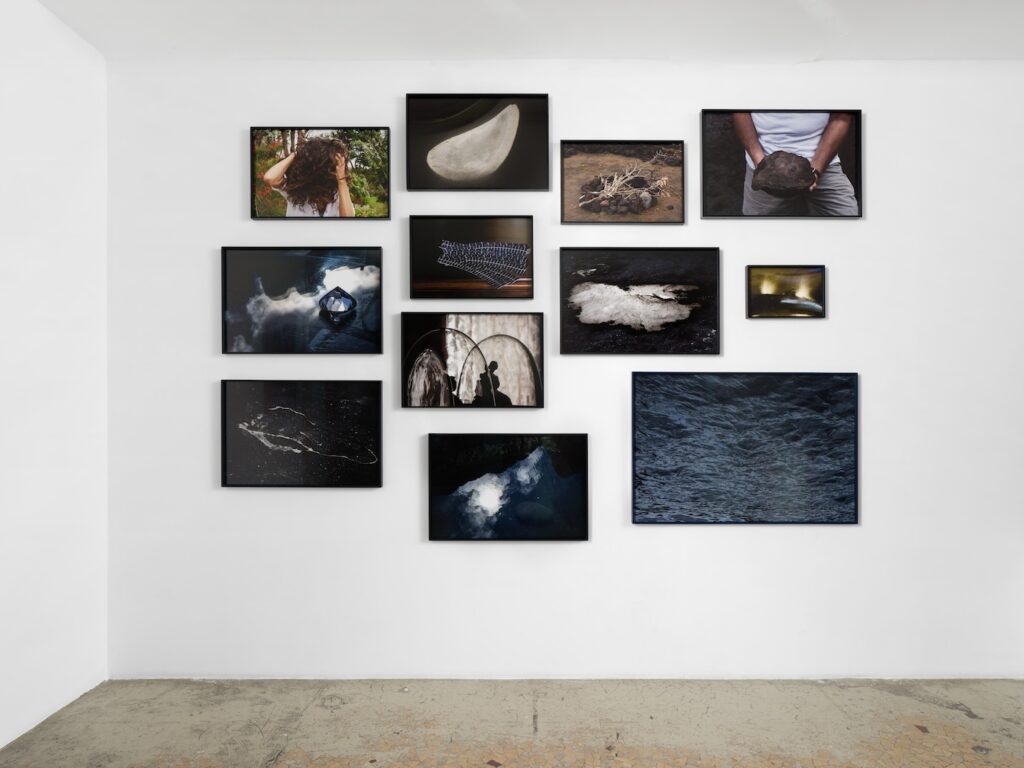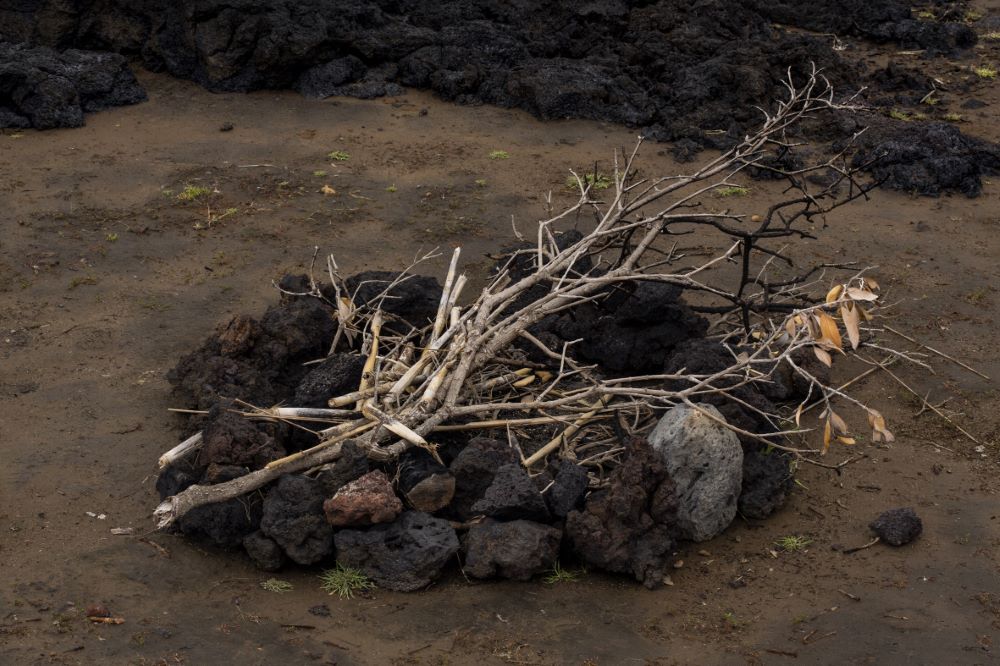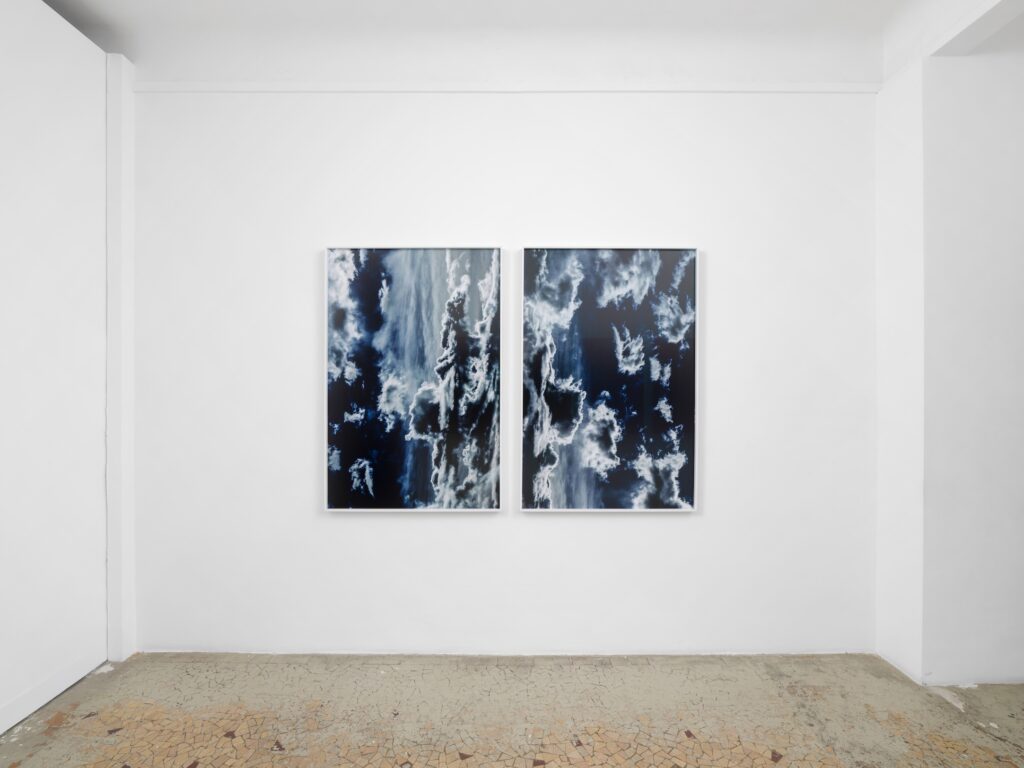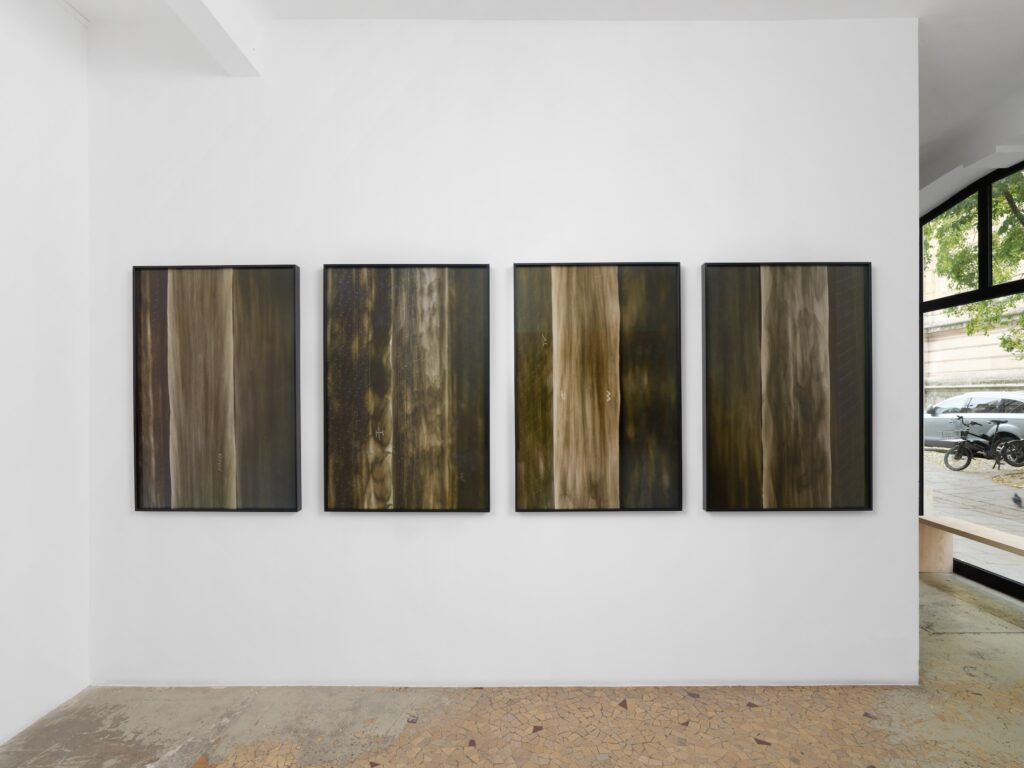Like the swirl of dust that forms before our eyes in the video that gives Manuela Marques’ exhibition its title, Vortex seems to be infused with the same breath: as the natural phenomena that animate the earth’s system. Winds, storms, clouds, marine and atmospheric currents, as well as volcanic and seismic forces, run throughout the exhibition.
Several photographs in the exhibition suggest passages, changes of state between the elements, such as the waves of a rough sea that seem to petrify in Storm (2022), or the clouds that evoke the formation of a column of volcanic ash in the diptych Phénomènes (2018).
Other images, such as the storm Manuela Marques perceives in a moving head of hair (L’Œil du cyclone 1, 2022), telescope different scales of space and time – from the telluric scale to that of the human body, from astronomical time to the subjective experience of the present. Each of them brings into play our relationship with phenomena that are as much beyond us as they determine our very existence.
Bringing together twelve photographs taken between 2019 and 2022, the “wall of images” that Manuela Marques imagined for the exhibition reinforces these effects of scale, correspondences and passages between natural elements. Images linked to the volcanic world (Bombe 4, 2022; Explosion 1, 2021; Explosion 2, 2022) or to the study of the solar system (La Mesure du Soleil, 2022) are mixed with observations made in everyday life. In several of these works, as if to emphasize the subjectivity of the gaze and establish a sense of proximity, natural phenomena are shown to us through the prism of a reflection – on the surface of water, for example, in Fusions (2022).
Another set of four photographs, Records (2018), can be seen as the “eye” of the vortex around which the exhibition revolves. It includes archival documents that Manuela Marques discovered at the Observatório Afonso Chaves in Ponta Delgada, Azores, she regularly visited between 2017 and 2021. From 1903 until the early 1980s, this type of black-smoke-coated paper strip was used to record seismic activity in the area.
The recordings that Manuela Marques has chosen to photograph bear witness to a major seismic and volcanic episode that left its mark on the archipelago: the eruptions of the Capelinhos volcano, which occurred on the fringe of the island of Faial between 1957 and 1958 and permanently altered the geological, as well as the human, face of the Azores. As a result of the eruptions, which engulfed a local whaling village, many inhabitants emigrated, mainly to the USA and Canada, while Faial enlarged by a few square kilometers.
Like these recordings, photography plays the role of a seismograph in this exhibition. It attempts to depict unseizable, unpredictable, subterranean forces, which often manifest themselves to us only indirectly. “How does one record the invisible?” asks Manuela Marques in her notes from her stays in the Azores. The images she has gathered in Vortex seem guided by this questioning. As open works, they invite us to give a place, in our representations and in our lives, to that which escapes us.
Christophe Gallois
October 2025
Christophe Gallois is senior curator at Mudam Luxembourg, where he has worked since 2007. He has curated solo exhibitions for artists such as Ho Tzu Nyen (2025), Lisa Oppenheim (2025), Dayanita Singh (2023), Tacita Dean (2022), David Wojnarowicz (2019), LaToya Ruby Frazier (2019), Katinka Bock (2018), Su-Mei Tse (2017), and Fiona Tan (2016), as well as several major group exhibitions, including L’Image papillon (2013) and The Space of Words (2009). As part of his work at Mudam, he has collaborated with institutions such as the Taipei Fine Arts Museum, the Aargauer Kunsthaus in Aarau, the Whitechapel Gallery in London, the Singapore Art Museum, the Whitney Museum of American Art in New York, the Centre de la Photographie in Geneva, and the Musée d’Art Moderne in Paris. In 2022, he curated the Luxembourg Pavilion at the Venice Biennale. He sits on the boards of directors of the contemporary art center La Synagogue in Delme and the CEAAC in Strasbourg.
 Manuela Marques exhibition view, November 2025
Manuela Marques exhibition view, November 2025
(photo Aurélien Mole)

Manuela Marques exhibition view, November 2025
(photo Aurélien Mole)

Manuela Marques
Feu 3, 2022
pigment print on baryta paper, framed, museum glass
ed.3 + 2EA
43,3 x 65 cm

Manuela Marques exhibition view, November 2025
(photo Aurélien Mole)

Manuela Marques
Phénomène 1 & 2
pigment printing on Canson Prenium
140 x 93 cm (x2)
(photo Aurélien Mole)

Manuela Marques
Record 1 & 2 & 3 & 4
pigment printing on baryta paper
120 x 80 cm (x4)
(photo Aurélien Mole)
